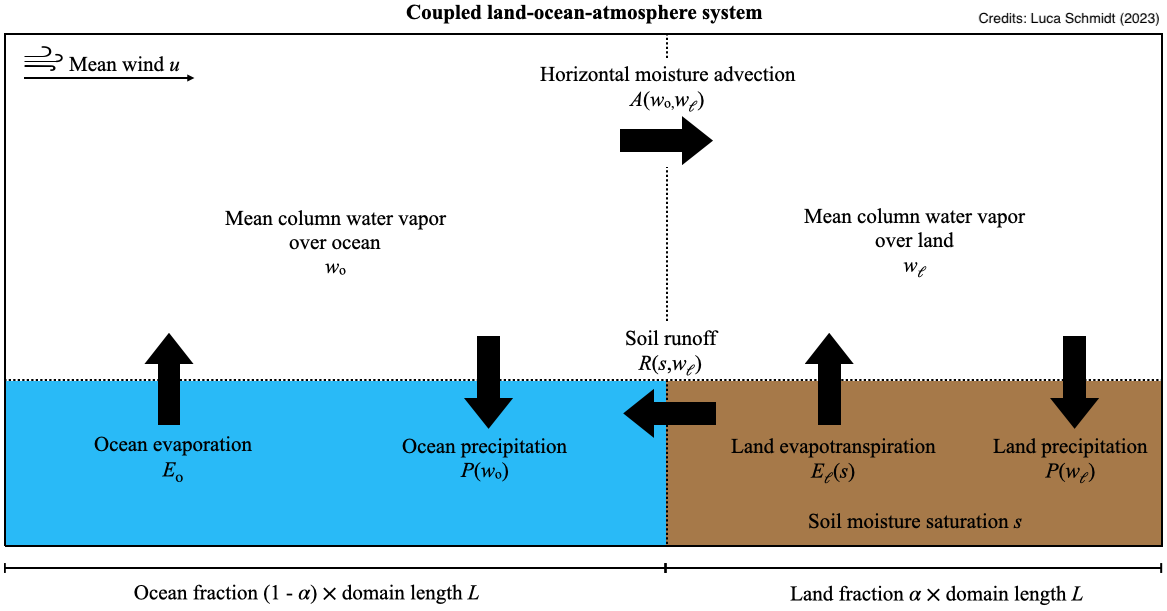Tracking the partitioning of rain
The tropics are the rainiest region in the world and the spatial distribution of its precipitation not only affects the local human population but also the global climate. We know from modern observations that the spatio-temporal mean rain rate over tropical land and ocean is nearly identical even though the ocean surface evaporates significantly more moisture into the overlying atmosphere than the land surface.
To understand this observation, the authors developed a conceptual model which treats land, ocean, and their associated overlying atmospheres as components of a coupled system. While the total water mass within this system is conserved, the model equations describe how the amount of water in each of the system’s components changes in response to moisture exchanges with other components through precipitation, evaporation, atmospheric advection, and soil runoff. In the case of precipitation, the model assumes that the relationship between precipitation and atmospheric moisture is identical over land and ocean such that the same relative humidity value leads to the same rain rate over both surface types. In other words, the way it rains is set purely by the atmosphere and not by characteristics of the underlying surface, being land or ocean.

A parameter sensitivity analysis of the system’s equilibrium states reveals that the precipitation partitioning between land and ocean is most strongly controlled by the efficiency of atmospheric moisture transport. This transport efficiency scales with the prevailing wind speed and sets an upper limit for the atmospheric moisture difference between land and ocean.
All obtained equilibrium solutions of the conceptual model have in common that it rains more over ocean than over land. This is a fundamental consequence of the existence of runoff. The land’s continuous loss of water through runoff needs to be compensated by atmospheric transport. This net transport of moisture from ocean to land requires the ocean atmosphere to be moister than the land atmosphere. Since precipitation is governed by the same monotonically increasing function of humidity over both surface types, it therefore must rain more over ocean. However, observations of the real world at times show stronger mean rain rates over land. Based on the conceptual model, this can be explained by a modification of the atmospheric moisture-precipitation relationship through the underlying surface. The authors conclude that the way it rains must be different over land and ocean. Precipitation over land seems to be possible under less favorable moisture conditions than over ocean. The detailed mechanisms through which the presence of land influences the way it rains remain to be investigated with a more realistic Earth System Model in a future study.
Original publication
Schmidt, L., and C. Hohenegger, 2023: Constraints on the Ratio between Tropical Land and Ocean Precipitation Derived from a Conceptual Water Balance Model. J. Hydrometeor., 24, 1103–1117, https://doi.org/10.1175/JHM-D-22-0162.1.
Contact
Luca Schmidt
Max Planck Institute for Meteorology
luca.schmidt@mpimet.mpg.de
